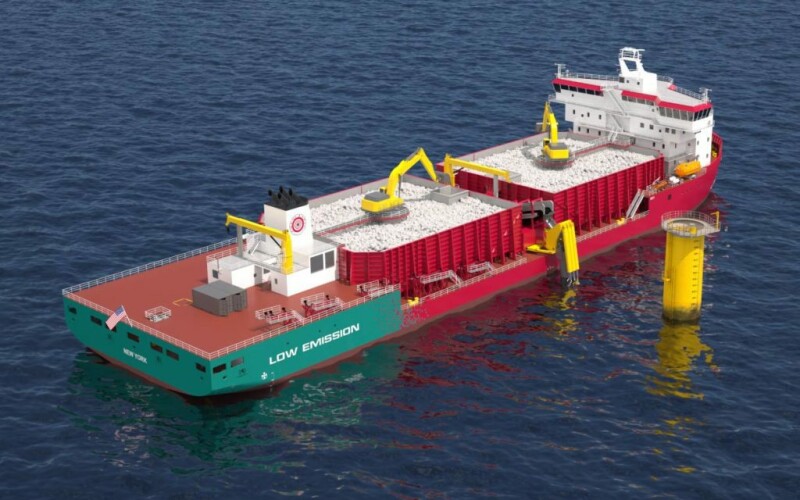A contract worth $250 million for an offshore substation platform and others for scour rock installation are early casualties of the decision to cancel the New York Empire Wind 2 offshore wind power project, the contracting companies said after wind developers and New York state officials agreed to step back from the plan.
Seatrium Ltd., Singapore, was awarded two contracts in May from Empire Offshore Wind LLC, a joint venture between Equinor and bp for engineering, procurement, construction, offshore hook-up, and commissioning of two offshore substation platforms for the Empire Wind 1 and 2 projects located about 20 miles south of Long Island, N.Y.
The Empire Wind partners ended a key agreement for financing the 1,260-megawatt Empire Wind 2 phase this week, notifying Seatrium that the second of two substation platforms would be cancelled.
“Construction work on the Empire Wind 2 OSS Platform is expected to commence only in June 2024, with minimal engineering work performed,” Seatrium said a statement. “The contract is structured on progressive payment milestones, and payment for the work performed to date has been received, resulting in neutral project cashflow.”
Construction work began in the fourth quarter of 2023 on the substation platform for the first-phase 810-MW Empire Wind 1 project and “the Empire Wind 1 project contract remains unaffected and continues as planned.”
Seatrium officials said the Empire Wind 2 contract cancellation “is not expected to have material financial impact on the earnings per share and net tangible asset per share of the group for the current financial year,” adding that the company “remains committed to supporting the global energy transition and is optimistic on the market opportunities in the long-term development of sustainable energy infrastructure.”
Great Lakes Dredge & Dock Corp. likewise announced that Empire Offshore Wind had informed the company, working in consortium with Van Oord, that the developers are terminating the rock installation contract for Empire Wind II, set to commence in 2026.
Great Lakes and Van Oord were contracted to perform rock installation for the Empire Wind I and II projects with installation windows in 2025 and 2026, and Empire Wind I is still on track for rock installation in 2025, according to Great Lakes officials.
“Termination of the Empire Wind II project initiates a contractually obligated termination fee payable to the consortium that is intended to cover lost earnings potential related to Empire Wind II,” the company said.
Eleni Beyko, senior vice president-offshore wind at Great Lakes Dredge, said the company remains confident that the U.S. offshore wind market will continue despite its ongoing financial challenges.
“New York remains committed to meeting the state’s clean energy goals and they have taken steps forward with the accelerated solicitations for new PPAs (power purchase agreements) to allow developers to adjust prices for inflation and develop more robust projects going forward,” said Beyko.
“Awards for the next solicitation round are expected in February 2024. We look forward to the start of the Empire Wind I installation expected in 2025, continuing our relationship with Equinor and bp as a preferred supplier, and bidding on future projects. We continue to pursue additional opportunities including projects internationally for 2026 and beyond.”
Providing rock for seafloor scour protection around wind turbines is part of the U.S. industry’s developing supply chain and New York state planners see the Hudson Valley as a major East Coast source. Great Lakes signed the first-ever subcontract for procurement of rock for a U.S. offshore wind farm with Carver Sand & Gravel LLC, a quarry located in Schoharie, N.Y.
The rock is to be quarried locally, transported to the Carver’s quayside on the Hudson River near Albany, and loaded onto Great Lakes Dredge’s rock installation vessel Acadia.





